Mrzygłód
Borough of Sanok , Sanocki District, Podkarpackie VoivodshipType of place
Forest clearingInformation about the crime
We visited Mrzygłód in the Sanok borough twice in 2022 in search of information about the Jews murdered in the spring of 1942 by the German police. The Regional Commission for the Examination of German Crimes in Rzeszów opened an investigation into the crime in the 1980s. In a letter dated March 19, 1981, to The Regional Commission for the Examination of German Crimes in Rzeszów from the Citizens’ Militia Station in Sanok, it is stated:
“[…] Our information that the German police shot 25 people in Mrzygłód in the spring of 1942 is confirmed. The executions were not carried out in one day. More than a dozen people were executed in one day, some of whom escaped and hid. The police caught them out the next day and shot them. The mass grave of the victims is located in the forest in Mrzygłód in the direction of Końskie village”. (IPN Rz 602/445)
We talked to two people who remember transporting Jews to the outskirts of the village for execution. Mr. Czeslaw Buszkiewicz:
“Jews had names and nicknames. There was Berku, but I don’t know his real name. He had a leather store. There is currently a schoolyard there. There was an Abrumciu, Abram’s nickname. His name was Abraham Teper. My grandmother had a bakery in Mrzygłód and used to visit him. He had the biggest store and he was the richest Jew in Mrzygłód. Abraham Teper. […] This Abram and all the others are buried in one place. It all happened in one day. There is a mass grave a little further away. Several oak trees are growing there.
– So, this monument does not stand at the grave?
– It stands next to it. Someone put metal memorials there. It’s next to the road on the left side, by the road to Końskie.
[…] They came from Sanok in one car, they were from the Gestapo. They saw the census. They knew where the Jews lived. The Jews were taken to the car. Three men went there to dig a hole. They took them over the hole and [shot them] in the head, in the head, in the head”. (July 5, 2022)
In the resources of the Elementary School in Mrzygłód, there is a written testimony of Wanda and Tadeusz Stoberski, which states:
“The Jews from Mrzygłód were taken in a wagon by one of the residents to the place of execution. One of the inhabitants of Mrzygłód, who was an eyewitness, says that when he was returning through the forest from Jurowiec that day, he saw the moment of the execution of Jews. Several Germans carried out the execution. We know from the accounts of people who are no longer alive that at the same time, the Germans killed a one-year-old girl by hitting her head against a tree trunk”.
The book about the history of the parish in Mrzygłód by Father Krzysztof Żołyniak includes the memories of witnesses of those events:
“Jan Sokołowski: A Gestapo officer grabbed the girl’s leg and in front of her mother [probably they were Małka Schwarz and her daughter Ryfka] hit her against a tree. The girl’s head rolled several meters. The mother started screaming. The Gestapo officer approached her and shot her twice but did not kill her. When she fell, he stood on her throat and crushed her larynx with his shoe. Then she stopped screaming.
Barbara Rudnicka: It was spring. The cherry trees were blooming. Every time I see cherry blossoms in bloom, I remember Jews. A Gestapo car arrived at the village. It was probably the same unit that executed Jews in Ustrzyki Dolne. As we calculated with gravedigger Chutkowski, 29 people were shot then. […] A Gestapo officer took Esterka out of the house, put her on a chopping block, shot her, and she fell on the manure. Her brother was shot in the barn. Young boys were forced to dig under gunfire, including my uncle Zygmunt Wolwowicz. Not all Jews were shot at once. The Gestapo came several times to kill Jews. Those who were not shot were resettled by the Germans. They were all gathered in the market square and taken to Zasław. Probably all of them died.
Stanisława Stróżewska: Some of the Jews were taken up the hill by a German car. They took them in pairs and went back and forth. There was a Jewish house where Tadeusz Wolwowicz lives today, on what is known as “The Border.” We were grazing cows. The Germans came, and all these people were shot on the spot; there were six of them, I think. I don’t know where they were buried.
Another boy was shot by the San River and buried there; you could see his shoes.
Wanda and Tadeusz Stoberski: We remember a little boy about 12 years old called Mojsia, whose parents were caught during a round-up. He hid for several days in the growing crops. Until his exposure, when he and a group of Jews were taken by wagon to Tyrawa Wołoska”. (Żołyniak 2017)
Several objects are located at the site of the execution and burial of the victims, placed there at different times after the war. These include crosses of various sizes and a metal structure shaped like a Jewish tombstone topped with a Star of David. The most recent memorial dates from 2013 and reads:
“To the memory of the Polish Jews murdered by the Gestapo in the spring of 1942. To the memory of three Roma people and one Slovak murdered by the Gestapo in 1942”.
The text ends with John Paul II’s words: Let us pray for our beloved brothers. The Mrzygłód community, 2013. The plaque bears the names of 24 Jewish inhabitants of the village. However, from the content of the plaque, it appears that the annihilation of the Jewish community of Mrzygłód took place in stages. The first massacre was supposed to have taken place in the spring of 1942, the next one in July of the same year, and the last one is dated September 1942. Nevertheless, the grave’s location remains unknown and will be the subject of the Foundation’s research shortly.
Father Żołyniak’s book includes villagers’ memories of their Jewish neighbors:
“The oldest villagers still vividly remember the Jews who lived in the center of the village. They mention the following families.
- Majer Mark and Estera Mark lived in the Fikowa midwife’s building. Majer was a horse trader, Estera ran a small shop.
- Szkulnik – a rabbi, was involved in ritual slaughter. He lived in the house, which was located in the school garden.
- Tepper family: Ryfka, Abraham, Nuchman, Mojżesz. They lived in a building that housed the Civizens’ Militia in the post-war years. The Tepper family were the wealthiest Jews of Mrzygłód. Ryfka was an excellent baker and ran a shop selling bread and other assortments. Abraham, her husband, was delivering various goods to the shop.
- Hersch Rochmes ran an inn and lived with his daughter-in-law and two sons in the building now owned by Leopold Biega.
- On the People’s House plot, two Jewish houses were inhabited by two Jewish families. Lejba had two daughters and a son and ran a textile shop, Szelma ran a butcher shop.
- Lejb Shek had three daughters. They all worked as tailors and ran a farm. They lived on the site where Stanisław Ł ominski’s garden is now.
- Estera, daughter of Jasiek from “The Border”, ran a small shop which was located in the building next to Mrs. Winiarska’s house.
- Ida Bronik, a merchant, lived with her daughter in the building where the pharmacy is now.
- Schwarz family: Mendel. Mindla, Salomon, Malka, Ryfka. The family lived in the building now owned by Christopher Figieli. There was a general store”. (Żołyniak, 2017)
IDENTIFICATION OF THE GRAVE BASED ON NON INVASIVE RESEARCH
On 27.04.2023, a site visit was carried out to determine the collective area of 26 victims. The selected location (GPS: N 49°37.369′ E 022°15.067′) was examined using a georadar (Mala X3M/Ramac 500 Mhz), 7 profiles were collected, named: MRZ10001, MRZ10002, MRZ10003, MRZ10004, MRZ10005, MRZ10006, MRZ10007.
The echograms marked disturbances in soil layers (annex mrzygłód, comparison of echograms MRZ10001-MRZ10007 – red arrows) at approx. 1.1 mb – approx. 6.8 mb, depth approx. 1.0 m – 1.2 m b.g.l. The approximate area occupied by the grave is: 2.5 mb x 5.0 mb.
The terrain measurement is not helpful in this case.
No search of archival aerial photographs for this area was conducted.
Sources
Transkrypcje
Contact and cooperation
We are still looking for information on the identity of the victims and the location of Jewish graves in Mrzygłód. If you know something more, write to us at the following address: fundacjazapomniane@gmail.com.
Bibliography
IPN Rz 602/445 General correspondence concerning the clarification of the circumstances of the death of 25 people of Jewish and Gypsy nationalities executed by the Germans in 1942 in Mrzygłód
Recording of the Zapomniane Foundation (audio file), name: Czesław B. b. 1936, topic and key words: Jewish grave in Mrzygłód, interviewed by Agnieszka Nieradko and Anna Skiba, 5 July 2022
Recording of the Zapomniane Foundation (audio file), name: resident of Mrzygłód b. 1936, topic and key words: Jewish grave in Mrzygłód, interviewed by Agnieszka Nieradko and Anna Skiba, 16 November 2022
Father Krzysztof Żołyniak, Mrzygłód. Zarys dziejów parafii, Rzeszów 2017
The Register of Killing Sites and Crimes committed by the Germans in Poland between 1939 and 1945, krośnieńskie voivodship, Warsaw 1983.
We have collected the materials about this village thanks to the funding provided by the International Holocaust Remembrance Alliance as part of the project “The rural Holocaust. Collecting and safeguarding the never recorded testimonies 100 forgotten Jewish graves 2021-2022”. The materials for this website were developed, digitized and made available as part of the project “Development of a digital archive of Jewish war graves outside the extermination camps and educational use of archive resources” thanks to funding from the Minister of Culture and National Heritage from the Cultural Promotion Fund.
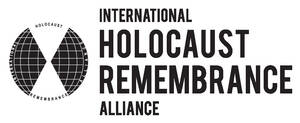
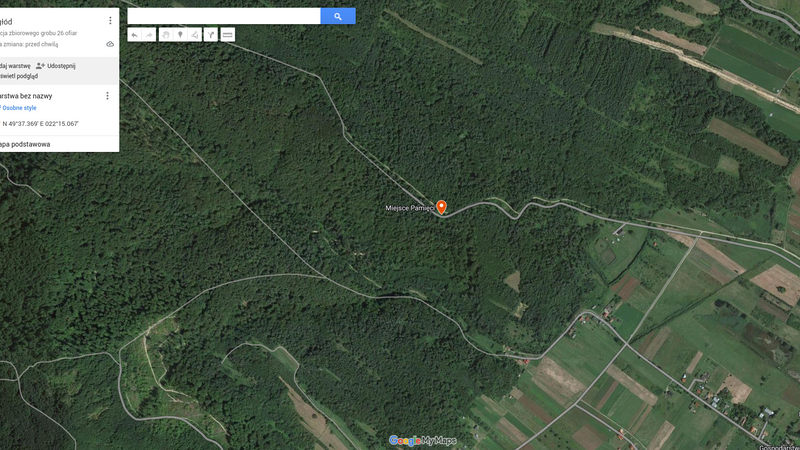 Mrzygłód fotografia satelitarna 1a
Mrzygłód fotografia satelitarna 1a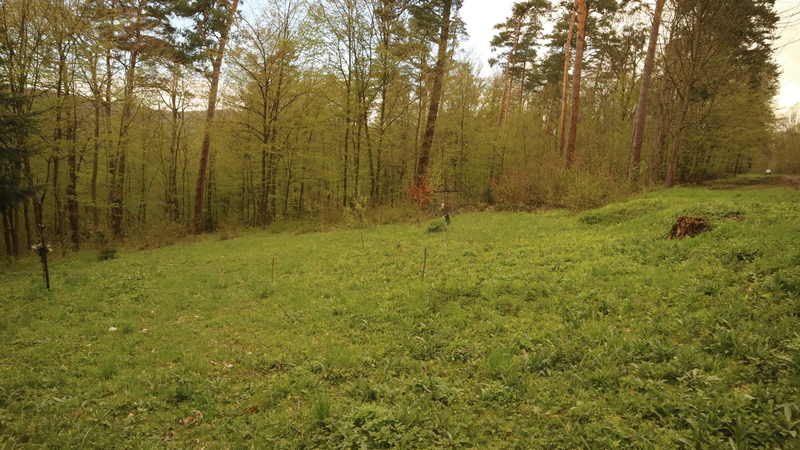 Mrzygłód
Mrzygłód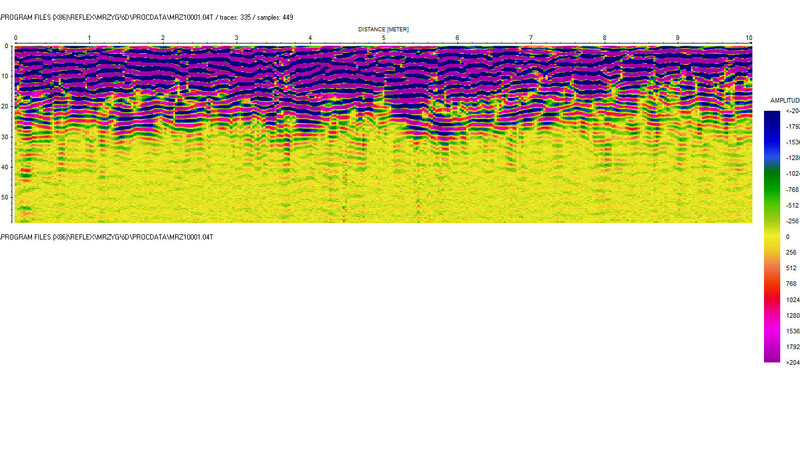 Mrzygłód MRZ10001
Mrzygłód MRZ10001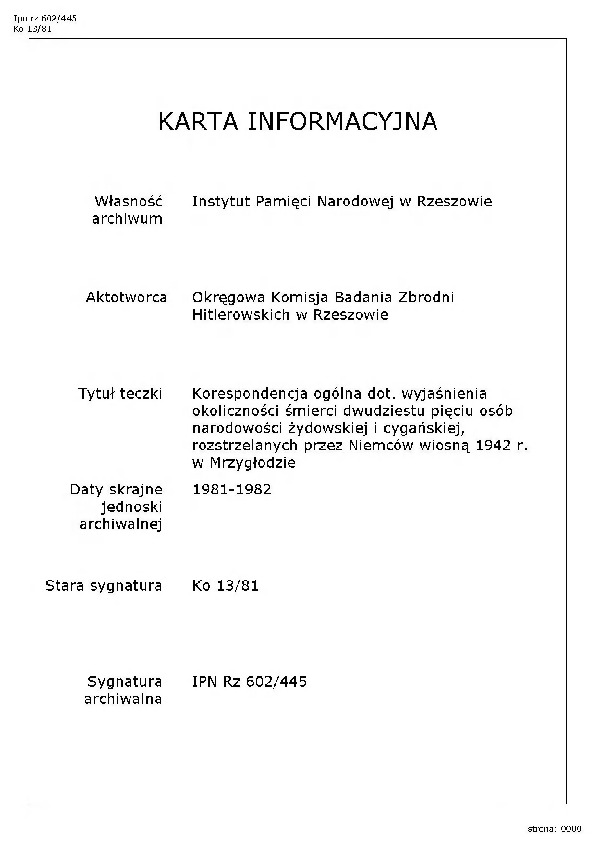 IPN Rz 602-445 Korespondencja ogólna dot. wyjaśnienia okoliczności śmierci dwudziestu pięciu osób narodowości żydowskiej i cygańskiej, rozstrzelanych przez Niemców wiosną 1942 r. w Mrzygłodzie
IPN Rz 602-445 Korespondencja ogólna dot. wyjaśnienia okoliczności śmierci dwudziestu pięciu osób narodowości żydowskiej i cygańskiej, rozstrzelanych przez Niemców wiosną 1942 r. w Mrzygłodzie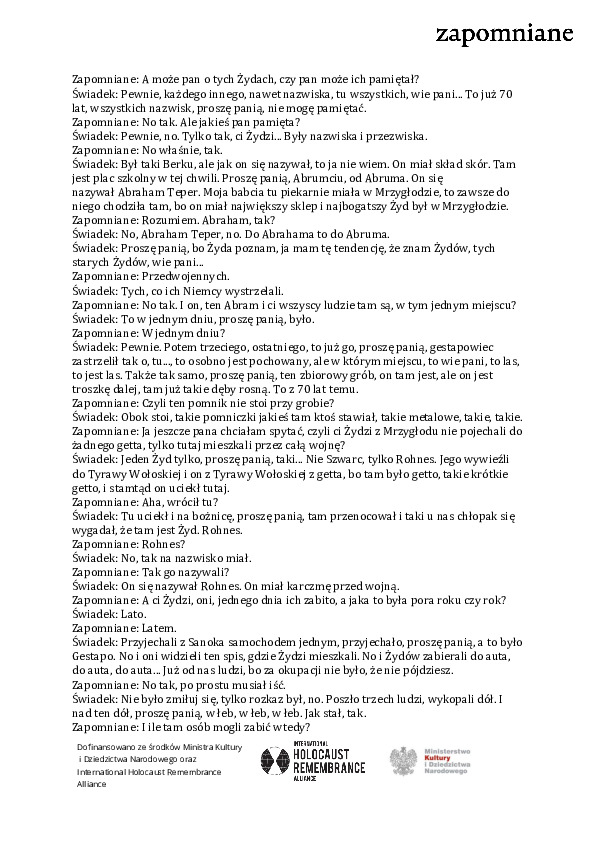 Mrzygłód - transkrypcja
Mrzygłód - transkrypcja